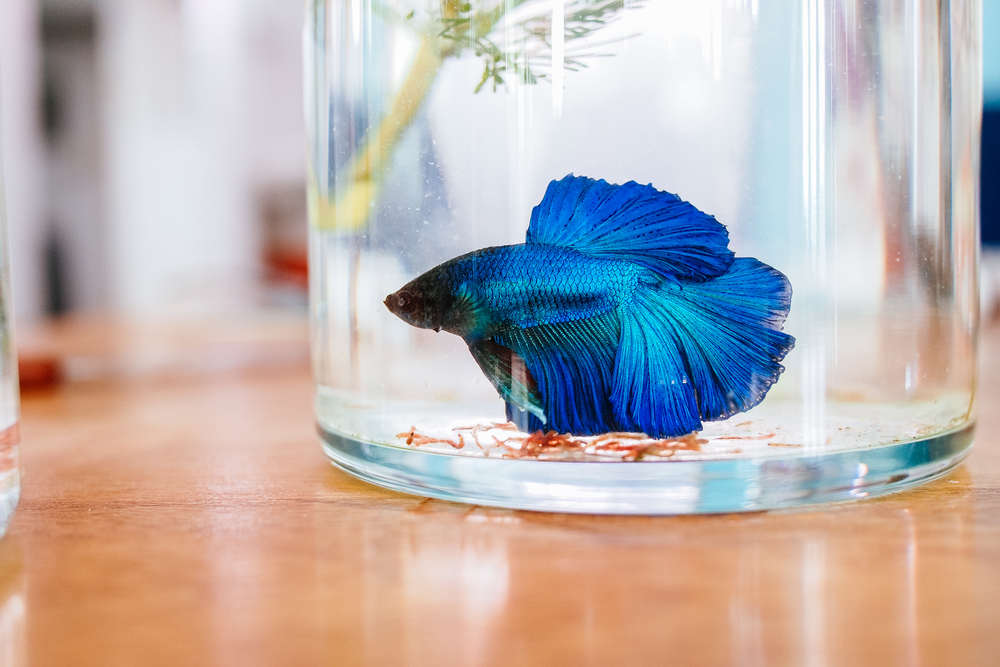Moving your betta fish from its small cup to a larger tank is vital in acclimating your companion to its new environment. It’s imperative to acclimate your betta to its new habitat so that your fish can adjust gradually and won’t be startled by abrupt changes in water conditions
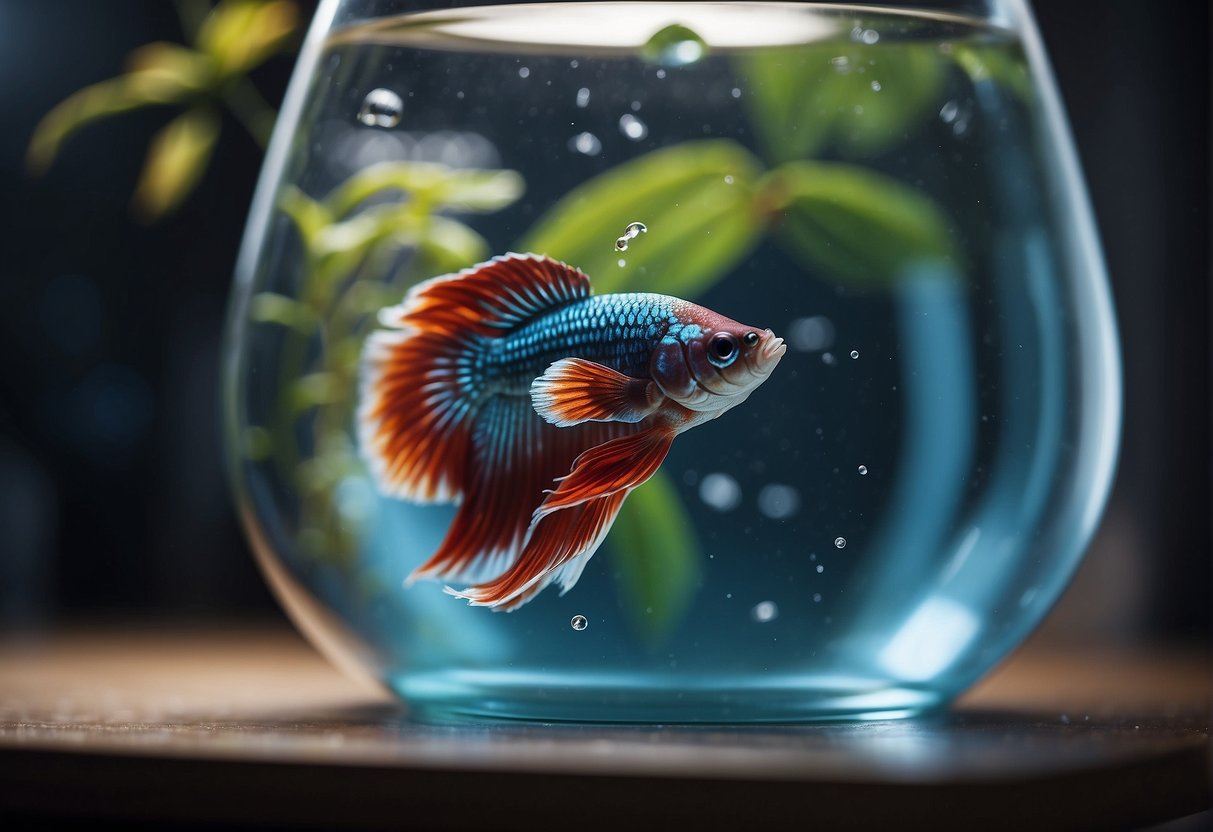
Even though betta fish have a hard reputation, they can be pretty sensitive creatures; therefore, you must know the proper acclimation process, as it helps minimize stress and ensure your aquatic friend gets off well.
Today’s guide covers everything on how to transfer betta fish from a cup into a tank, from tank preparation to acclimation techniques. So, keep reading!
Keep reading these other related posts for optimal care tips for your betta friend:
- Why Is My Betta Flaring at Nothing?
- How to Feed Snail in Betta Tank
- How Do I Know If My Betta Fish Is Happy?
Contents
Understanding Betta Fish Requirements
Before introducing a betta fish to a new environment, you must ensure its habitat requirements are met. This would mean an appropriately sized and fitted aquarium and properly managed water parameters that resemble their natural environment.
Preparing the New Tank
It is always important to establish a stable and healthy tank setup before introducing betta fish to a new environment. Let’s discuss how to do this in more detail.
Tank Size and Setup
Choosing the right tank size is super important because it influences your fish’s overall well-being. Your fish might feel cramped and uncomfortable if the tank is too small.
An ideal tank size for your betta is one that can carry a minimum of 5 gallons of water. That does the trick and provides ample swimming area. It also helps slow down the development of pollutants, which can be more concentrated in smaller amounts of water. For your tank setup, you may consider:
- Decorations: Plants and hiding spots in your tank help simulate a betta’s natural environment and reduce stress.
- Substrate: A layer of gravel or sand at the bottom develops beneficial bacteria and enhances the tank’s aesthetics.
- Filter: Betta fish enjoy calm waters, so a moderate filtration system will keep the water clean without creating a strong current.
Water Parameters and Quality
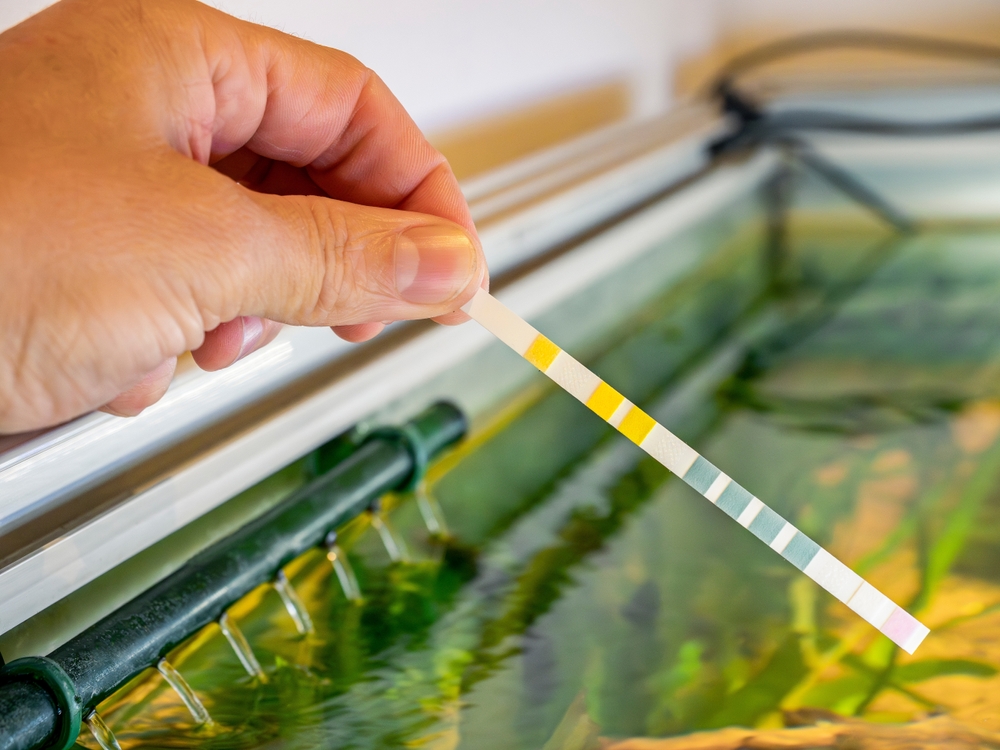
Before introducing a betta fish to its new tank, you want to ensure the water conditions are safe and comfortable for the transition. The right water parameters go a long way to thriving betta fish. Here are some tricks to keep track of essential water parameters:
- Temperature: Betta fish thrive in warm water, so your tank’s temperature needs to be heated between 76 to 81 degrees Fahrenheit.
- pH: The ideal pH level for a betta tank is around 6.5 to 7.5. After acclimation, you need to test the water regularly to ensure it stays within this range.
- Oxygen: While bettas can breathe air due to their labyrinth organ, oxygenated water is still essential. A well-circulated laminar flow is all they need to thrive.
Overall, you want to monitor and adjust these factors frequently to maintain a stable environment that supports your betta’s health and general well-being.
After that, you can implement an acclimation technique that eases the betta into its new environment without stress. Throughout this process, you must monitor the betta’s behavior to make sure it is adjusting well to the changes.
Cycling the Tank
Start by cycling the tank. This is an essential step that prepares the ecosystem for the betta. It involves cultivating a colony of beneficial bacteria which are necessary for breaking down ammonia, a toxic byproduct from fish waste. To safely cycle the tank, you need to:
- Fill the tank with dechlorinated water, using a water conditioner to neutralize harmful chlorine.
- Add ammonia to the tank to feed the developing bacteria, monitoring levels with a reliable thermometer.
- Regularly test the water for ammonia, nitrites, and nitrates, ensuring they reach safe levels: 0ppm ammonia, 0ppm nitrites, and below 40ppm nitrates.
Setting up Filtration and Heating
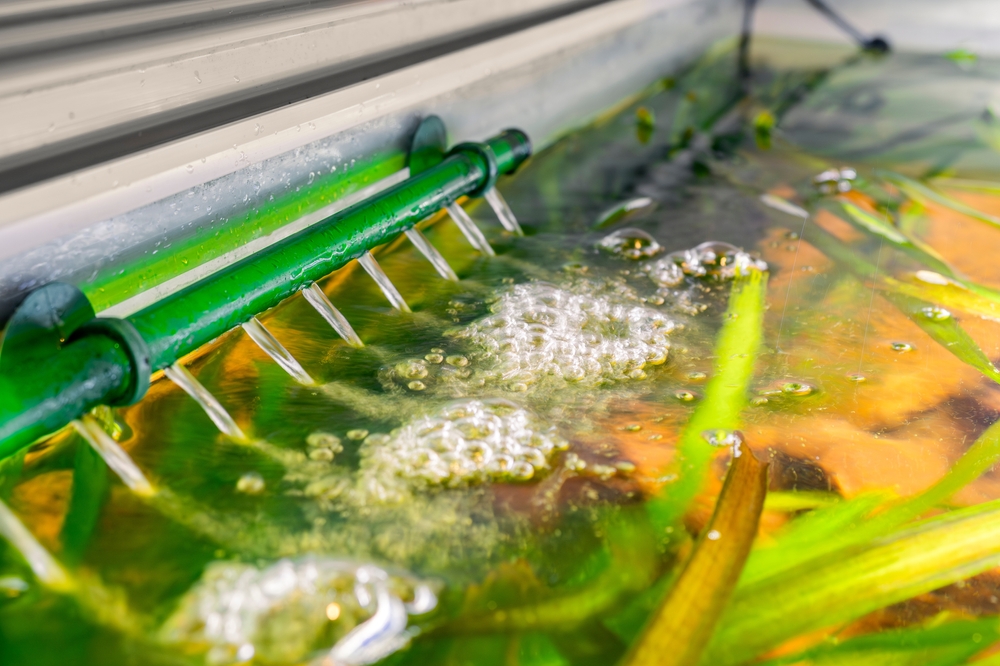
Having cycled the tank, you want to install a filtration system designed to handle the tank’s volume. This system continuously circulates and filters the water, removing physical debris and housing beneficial bacteria.
You should also prioritize installing a heater, as it helps maintain water temperature, especially during colder months. Bettas are tropical fish and require stable temperatures between 76°F and 80°F, so I always use a thermometer to monitor these conditions closely.
- Filtration System: Choose a filter that can cycle the entire tank’s water volume multiple times per hour.
- Heater: Install an adjustable heater to maintain a stable temperature suitable for your betta fish.
Acclimation Techniques
Two common acclimation techniques are the drip and floating techniques. For the drip method, you want to slowly drip water from the tank into the cup using an airline tube over a 45-minute to 1-hour period.
By gradually adding tank water to the cup, the pH level and water parameters reach equilibrium at a safe pace for the fish. Afterward, you want to gently release the betta into the tank, discarding the water in the cup to prevent cross-contamination.
On the other hand, the floating method involves floating the cup containing the betta in the tank for about 15 minutes to equalize the water temperature. After the 15-minute mark, you want to add a small amount (approximately ½ cup) of tank water every 15 minutes over the course of an hour to acclimate the betta to the tank’s water chemistry.
After the acclimation period, use a clean, fine-mesh aquarium net to gently scoop the betta out of the cup and into the tank. This prevents unnecessary stress and avoids transferring old water that may contain waste and contaminants into the new habitat.
By carefully adhering to these steps, you guarantee a stable transition for the betta fish, minimizing stress and fostering a healthy start to its new home.
How to Transfer Betta Fish: Post-Transfer Care
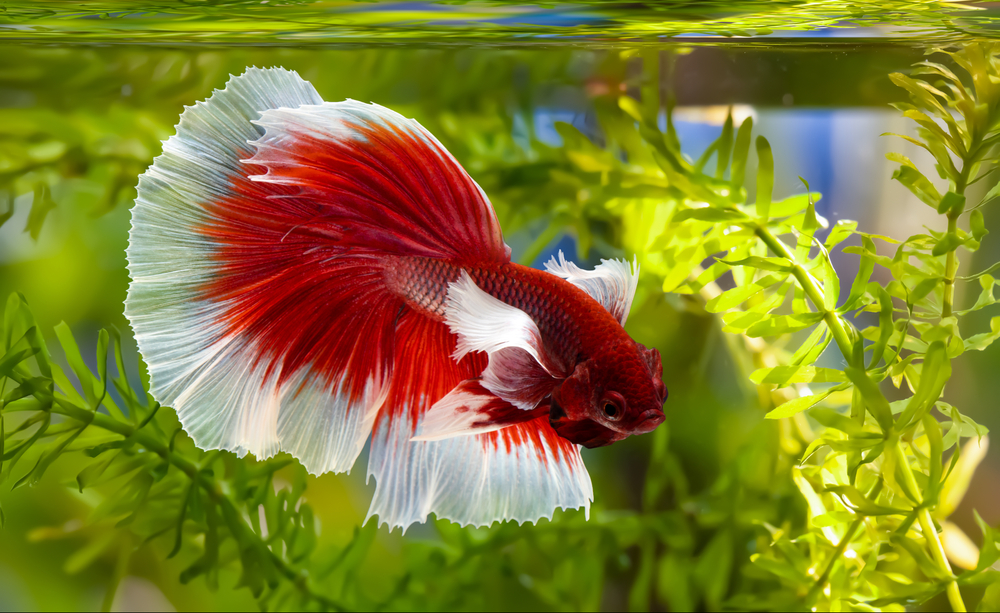
Having completed the acclimation process, the next thing to focus on is catering to the betta’s health and well-being. This involves vigilant monitoring of the fish’s behavior and health and adjusting its feeding regimen to suit its new environment.
Feeding and Nutrition
You want to feed your betta fish with high-quality pellets specifically designed for them, ensuring that the pellets are small enough to eat.
Feeding should be twice a day, and an amount should be provided within a couple of minutes to prevent overfeeding. You can enrich their diet with live food, such as brine shrimp or bloodworms, which is beneficial for their health.
Monitoring Health and Behavior

You want to look out for signs of illness or parasites daily. Clear signs of health issues in bettas include changes in behavior, such as a loss of appetite or lethargy, and physical symptoms, like faded colors or clamped fins. By paying close attention to your betta, you can identify these signs early on and take swift action toward getting them better.
Recognizing and Treating Diseases
Identifying diseases early is key to successful treatment. If your betta shows signs of disease, such as abnormal swimming or discoloration, you should take immediate action.
Having a quarantine tank will allow you to separate sick fish, preventing the spread of parasites and infections to other healthy tank mates.
Maintaining Optimal Tank Environment
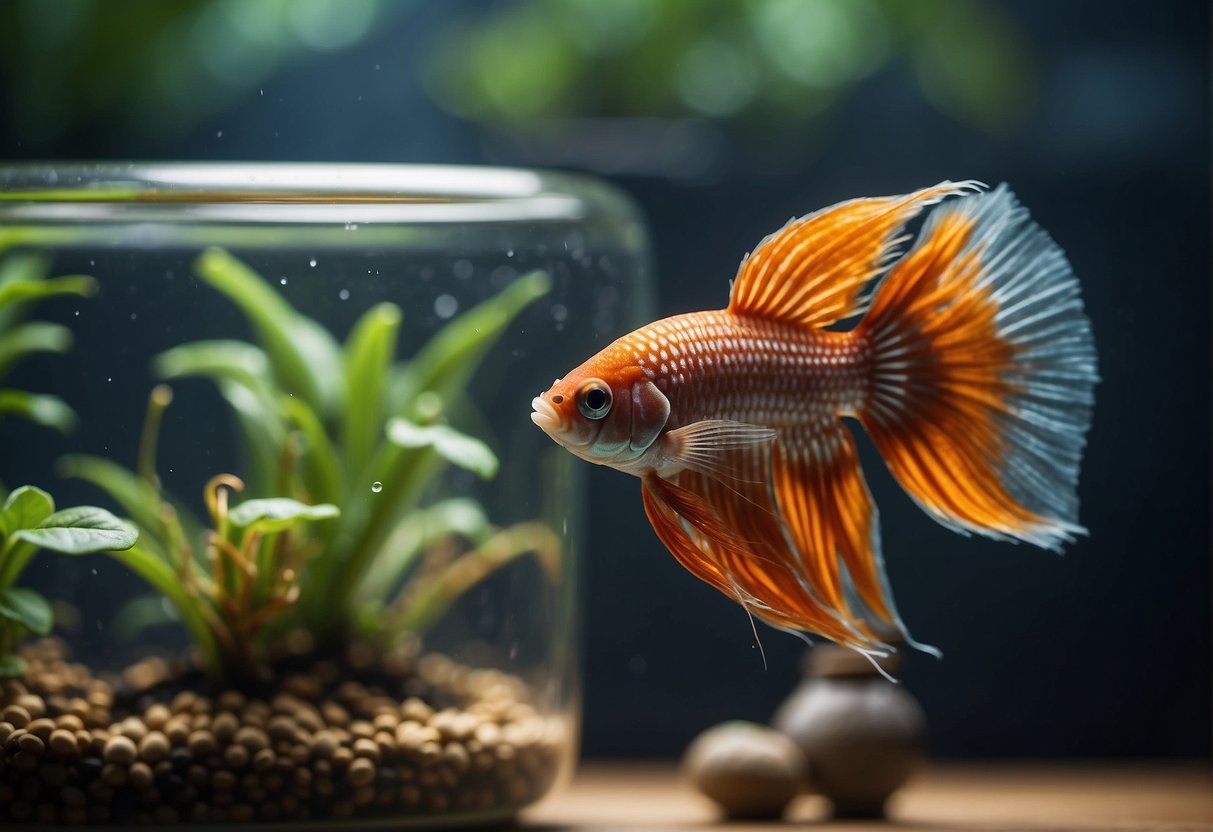
To protect my betta fish’s well-being, I always keep their tank environment stable and healthy. This requires thorough management of water quality and a consistent cleaning routine.
Routine Cleaning and Maintenance
As highlighted throughout the course of this guide, maintaining the right habitat conditions will help your betta thrive. On that note, you must clean your at least once a week. This typically involves a partial water change, removing 20-25% of the tank water.
While at it, you should clean the tank walls and filtration system. Doing so helps lower ammonia levels and keeps nitrates in check. On another note, you want to be careful not to disturb the good bacteria that colonize the filter and substrate. They are necessary for breaking down harmful ammonia and nitrite into less toxic nitrate.
Water Quality Management
The best approach to water quality management involves a consistent testing routine to monitor ammonia, nitrite, and nitrate levels. Besides getting rid of macro debris, you want to use a reliable water testing kit weekly to ensure the parameters remain safe for the betta, aiming for ammonia and nitrite levels at 0 ppm and nitrate levels below 20 ppm.
You should also implement water conditioners to your water quality management routine. Water conditioners help remove chlorine, chloramines, and heavy metals, which harm many aquarium fish.
Introducing Betta to Community Tanks
There are a couple of guidelines to follow t to introduce betta fish to a community tank. That way, you can guarantee that the betta and its future tank mates stay healthy. One of the first steps to take is the quarantine process.
You want to keep the betta in a quarantine tank for 14 to 30 days. That way, you get to observe the betta for any symptoms of diseases without endangering the well-being of the established community tank. Let’s talk about a few noteworthy things during the quarantine period.
| Behavior | Notes |
|---|---|
| Aggression | Betta fish may flare or charge at reflections or when disturbed. |
| Stress Levels | Look for signs like loss of color or appetite. |
A well-designed community tank should feature lots of plants and hiding spots, as they are essential for a healthy betta fish to feel safe. To this effect, ensure you prioritize:
- Hiding Spots: Have adequate cover and plants
- Territorial Needs: Have enough space to avoid territorial conflicts
When it’s time to move the betta to the community tank, I acclimate it slowly to match the water parameters, reducing stress levels for my betta. This slow transition is the key to a successful introduction, as it allows the betta to become accustomed to its new environment gradually.
- Acclimation: Slowly adjust the betta to the community tank’s water conditions
- Introduction: Carefully introduce the betta to the community tank to observe initial interactions
After acclimation, I watch how the betta interacts with other fish in the tank. If there’s too much aggression, I’m prepared to move the betta back to a solitary habitat for its safety and the well-being of the other fish. Through these steps, I aim to foster a peaceful and thriving community aquarium.
Frequently Asked Questions
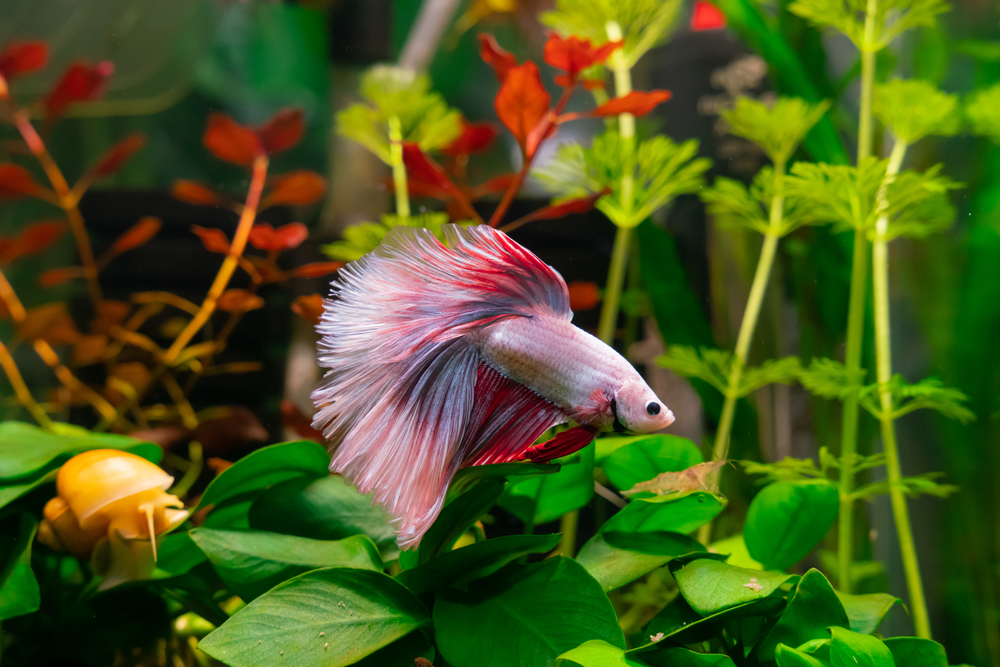
Let’s address some common concerns you may have about transferring your betta fish to a new environment, ensuring their safety and health during the process.
What are the best practices for acclimating a betta fish to a new aquarium?
When acclimating a betta fish, it’s crucial to adjust your fish to the new tank’s conditions gradually. A great method is floating the fish’s cup in the aquarium to equalize the temperature and adding small amounts of tank water to their cup at intervals, a practice detailed in acclimation tips.
Is it necessary to use a water conditioner before introducing a betta fish to its tank, and how long should I wait afterward?
Using a water conditioner is essential to neutralize chlorine and chloramines in tap water. Adding the conditioner to the new tank before introducing the betta and waiting at least 15 minutes for it to take effect is the move to make.
What is the proper procedure to ensure the safe transition of a betta fish from its transportation cup to the aquarium?
Ensuring a safe transition involves floating the cup in the tank to match temperatures and gradually mixing tank water with the water in the cup. This process should take around 30 minutes. After that, you can gently scoop the betta into the tank.
How long should a betta fish tank be allowed to cycle before adding the fish to avoid new tank syndrome?
The tank should cycle for at least 4 to 6 weeks to establish a stable biological filter, critical in preventing new tank syndrome.
What steps should be taken to introduce a betta fish to a community tank with other fish?
Introducing a betta to a community tank requires observation of both the betta and tank mates to ensure compatibility. As outlined in earlier, it’s helpful first to acclimate the betta to the tank environment and monitor interactions closely to prevent aggression.
Why is there a recommended waiting period before placing a betta fish in its new environment?
The waiting period allows the betta to become accustomed to the new tank’s temperature, pH, and other water parameters. This gradual approach minimizes stress and shock to the fish, which could otherwise lead to health issues.

Ian Sterling, founder of Fishlab.com, began his aquarium journey over 30 years ago, driven by a deep fascination for fish and their diverse personalities. His website, Fishlab.com, is dedicated to making fishkeeping accessible and enjoyable, offering beginner-friendly guidance, expert insights, and a community for aquarists to connect and share experiences.


